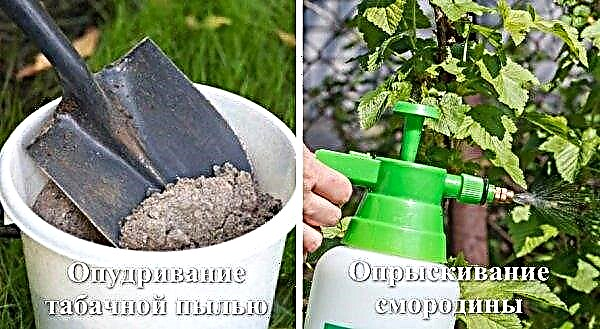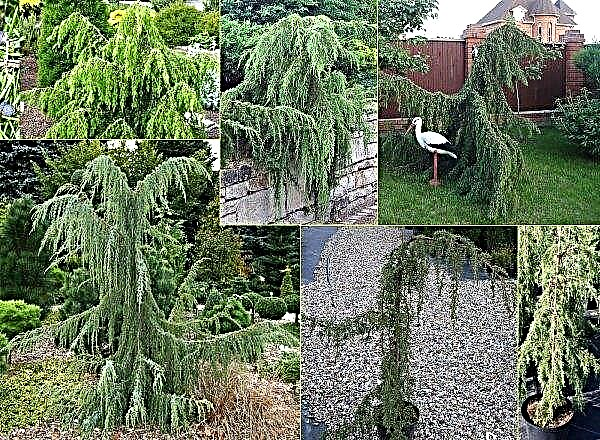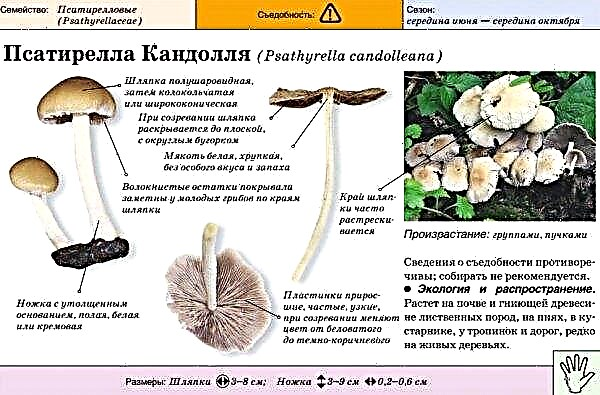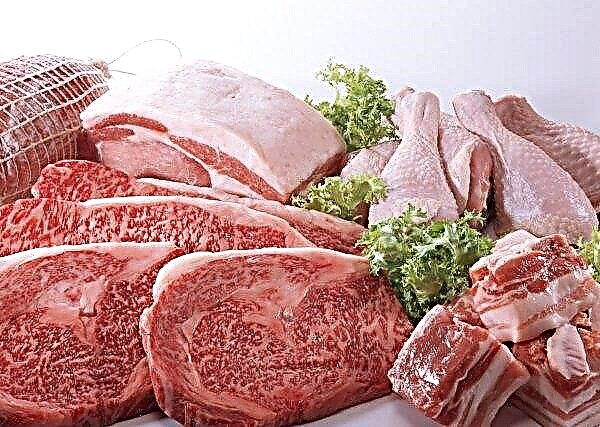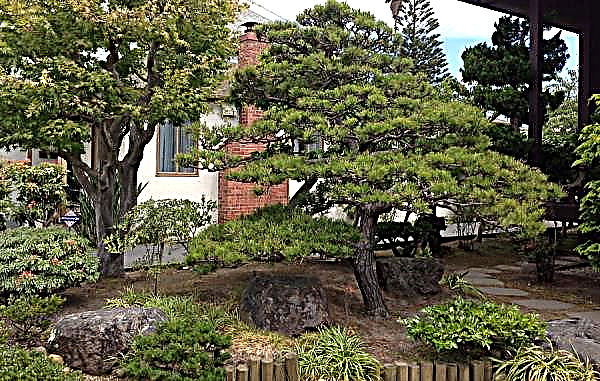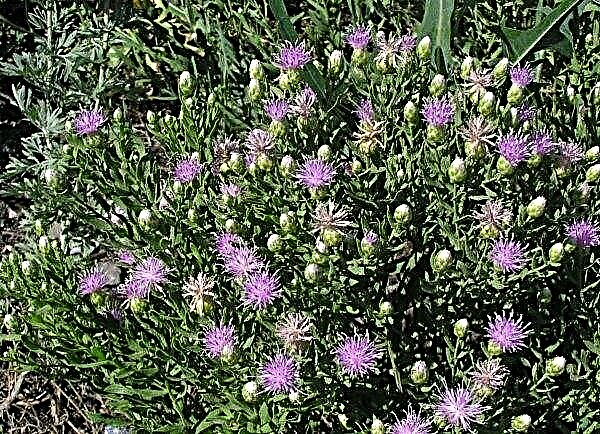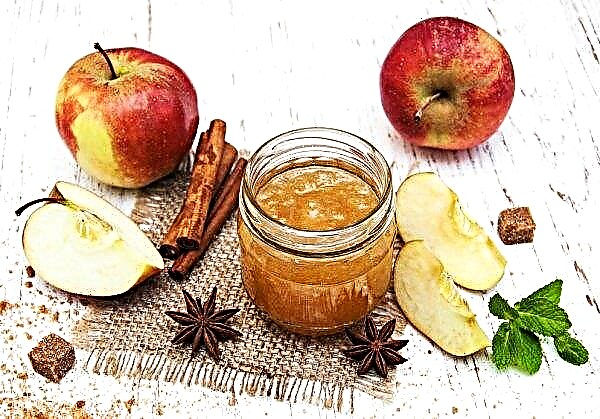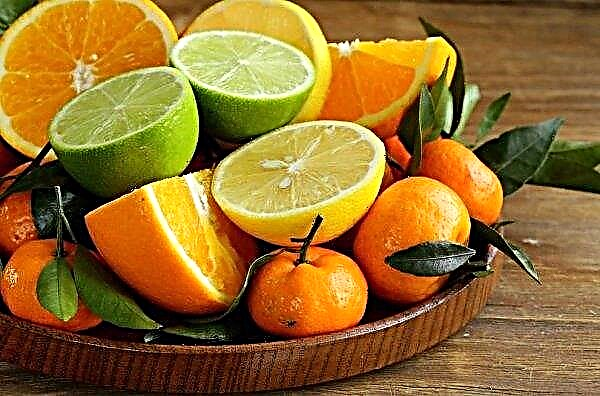Apple juice is a less healthy product than a fresh high-quality apple, however, a certain amount of vitamins, minerals and other valuable substances in such a preparation is still preserved. The only problem is that the store juice in its content is tinted water at best, and at worst it is a set of preservatives, stabilizers, dyes, flavorings, flavor enhancers and other chemicals that are very dangerous for health.
This review details how to make tasty and healthy homemade apple juice, as well as harvest it for the winter in the fastest and easiest way.
Selection and preparation of ingredients
Of course, you can make juice from any apples, but in order to make more finished product and less waste, you need to try to choose those varieties that differ in the maximum degree of juiciness.
Important! Both sweet and sour apples are suitable for juice, although it is generally accepted that the most delicious drink is obtained from those varieties in which the ratio of sugar to acid is 3: 5.
Traditionally, the best raw materials for juice are such well-known varieties of apples as:
- Idared
- Ambrosia
- Antonovka;
- Arlet
- Golden
- Gren Star;
- Granny Smith;
- Diva;
- Mac;
- Red Delicious;
- The glory of autumn;
- Spencer
- Topaz;
- Fuji
- Honey Crisp.
It should be noted that from the point of view of the high juice content and tasting assessment of the finished drink, the selection of the right variety can vary greatly.  So, for example, according to many years of research conducted for the purpose of use in juice production, the leaders among apple varieties in the maximum yield of liquid that is obtained during the spin process are:
So, for example, according to many years of research conducted for the purpose of use in juice production, the leaders among apple varieties in the maximum yield of liquid that is obtained during the spin process are:
Check out
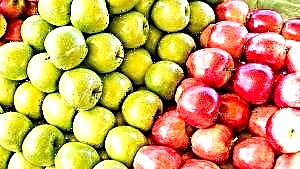
- Augustus
- Bolotovskoe;
- Buninsky;
- Vita;
- Zaryanka;
- Health;
- Kurnakovskoe;
- Mezenskoye;
- Olympic
- Autumn scarlet;
- Oryol striped;
- First thing;
- First salute;
- Proton;
- Rossoshanskoe striped;
- Freshness;
- Synap Oryol;
- Anniversary.
According to the same data, the highest taste characteristics of the drink can be obtained when using such varieties as raw materials, such as:
- Bezhin meadow;
- Buninsky;
- Venyaminovsky;
- Veteran;
- Zaryanka;
- Kandil Oryol;
- Kurnakovskoe;
- Lobo
- March;
- Novelty
- Olympic
- Pepin Oryol;
- Freshness;
- Spartan
- Juice 2;
- Start;
- Stroyevsky;
- Apple saved.
It is reasonable to conclude that the varieties present in both of the above lists (for clarity, they are highlighted in the text) are the best choice for a housewife who wants to make good apple juice.

Finally, the best raw materials for juice are fruits grown in your own garden. Of course, it is desirable that the basic rules of organic farming are respected, then the finished product will turn out to be not only tasty, but also environmentally friendly, and therefore especially useful.
By the way, carrion or slightly damaged specimens or even rotten specimens are great as raw materials for making juice. It is important only to carefully examine each fruit before use and with a sharp knife to remove all damaged areas.
Important! Squeeze the juice immediately after violation of the integrity of the fetus so that the flesh does not have time to darken.
Otherwise, the preparation of apples for squeezing nectar is always carried out according to the same scheme:
- rinse the fruit well under running water (if the apple tree was not treated with pesticides, the procedure is necessary just to wash dust and dirt off the surface of the apples, but if there is no such confidence, each fruit should be washed more thoroughly, preferably using a soft sponge, which each fruit is processed);
- let the water drain by laying apples on a flat surface covered with a paper towel or other water-absorbing material;
- cut each fruit into 4 parts, remove the tail and the fragment of the seed chamber with seeds from each quarter.

Homemade Apple Juice: Preparation and Preservation
Despite the fact that any apple juice is essentially a liquid extracted from the pulp of an apple.
In fact, there are several varieties of this drink, and the product can be classified according to several criteria:
- by extrusion method - grinding, spin using a press, centrifugation, etc .;
- in structure - with or without pulp, clarified or unclarified;
- in composition - using fruits of one variety, fruits of different varieties, or with the addition of other fruits and even vegetables (blended);
- taste - sour, sweet, sweet and sour, with a pronounced aroma or without it;
- by the presence of sweeteners and other additives - natural, with the addition of sugar, water, preservatives, etc.
Important! In stores, as a rule, the so-called restored juice is sold. It is an apple powder diluted with water.
The most useful in this case is freshly squeezed juice of direct extraction, and it is better to have a certain amount of pulp in it, since in this case the drink is rich not only in vitamins, minerals, amino acids and other biologically active substances, but also in an ingredient such as fiber, which is exclusively important for normal bowel function.

However, such a product must be consumed immediately after its preparation, while if you want to make reserves for the winter, you have to preserve the juice.
Important! The yield of juice from 1 kg of apples depends not only on the variety and degree of ripeness of the fruit, but also on the quality of the technique used for pressing. If you have the “right” raw materials and a high-tech device in your household, you can count on getting 600-700 g of juice from every kilogram of apples.
During heating, which is a prerequisite for the drink to be stored for a long time, some of the beneficial substances contained in it (primarily vitamin C, which the apple is very rich in) irretrievably disappear, but some biologically active components are still preserved Therefore, you can roll up an apple drink, it is in any case better than buying it in a store.
From a juicer

3.5 L 120 minutes
Nutritional value per 100 g:
 Squeeze nectar from apples with a juicer.
Squeeze nectar from apples with a juicer. So that the liquid does not darken, squeeze the juice from the lemon and mix with apple juice (instead of lemon, you can use 1 tsp of citric acid).
So that the liquid does not darken, squeeze the juice from the lemon and mix with apple juice (instead of lemon, you can use 1 tsp of citric acid). Pour the resulting liquid into a wide-top container and leave for 15–20 minutes.
Pour the resulting liquid into a wide-top container and leave for 15–20 minutes.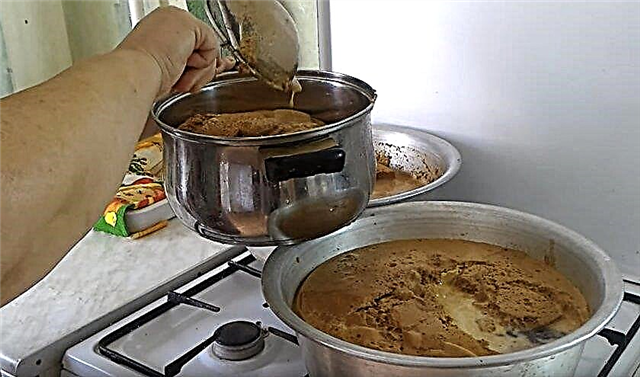 After a while, when a dense head of foam forms on the surface, carefully remove it with a slotted spoon. Apple foam can be used to make jams and other dishes, but it is better to brew juice without it.
After a while, when a dense head of foam forms on the surface, carefully remove it with a slotted spoon. Apple foam can be used to make jams and other dishes, but it is better to brew juice without it.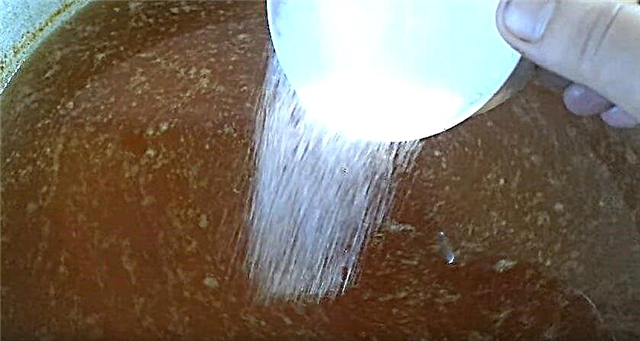 Pour the drink into the pan, add sugar. The amount of sugar indicated in the recipe during the canning process can be changed depending on the initial quality (degree of sweetness) of the apples, as well as the taste preferences of the hostess, up to the complete exclusion of this ingredient from the finished product.
Pour the drink into the pan, add sugar. The amount of sugar indicated in the recipe during the canning process can be changed depending on the initial quality (degree of sweetness) of the apples, as well as the taste preferences of the hostess, up to the complete exclusion of this ingredient from the finished product. Put on fire, cover and cook until product temperature rises to + 95ºС. If there is no device for changing the temperature of the liquid in the household, you should focus on the appearance of small bubbles at the bottom of the pan.
Put on fire, cover and cook until product temperature rises to + 95ºС. If there is no device for changing the temperature of the liquid in the household, you should focus on the appearance of small bubbles at the bottom of the pan. To maintain the maximum amount of vitamins, it is very important not to bring the drink to a boil. Sterilize jars and lids. Pour pasteurized liquid into still hot jars, cover with lids and immediately roll up.
To maintain the maximum amount of vitamins, it is very important not to bring the drink to a boil. Sterilize jars and lids. Pour pasteurized liquid into still hot jars, cover with lids and immediately roll up. Turn each jar upside down and carefully inspect the junction of the lid and glass. If there are no signs of leakage, leave the cans upside down to cool completely, and then rearrange them in a place protected from light and drafts for permanent storage.
Turn each jar upside down and carefully inspect the junction of the lid and glass. If there are no signs of leakage, leave the cans upside down to cool completely, and then rearrange them in a place protected from light and drafts for permanent storage.
Video recipe
From a juicer Video recipe: From a juicer
Important! If the fruit used is not a scavenger, but fruits taken from a tree, they can be passed through the entire juicer without cutting or removing the core.
Spin, pasteurization, bottling

6-7 L 180 minutes
chokeberry
500 g
Nutritional value per 100 g:
 Prepare apples in the manner described above, squeeze the juice out of them using a juicer. If desired, using a press or muscular effort, remove the remaining juice from the cake that remains as a result of using the juice extractor.
Prepare apples in the manner described above, squeeze the juice out of them using a juicer. If desired, using a press or muscular effort, remove the remaining juice from the cake that remains as a result of using the juice extractor.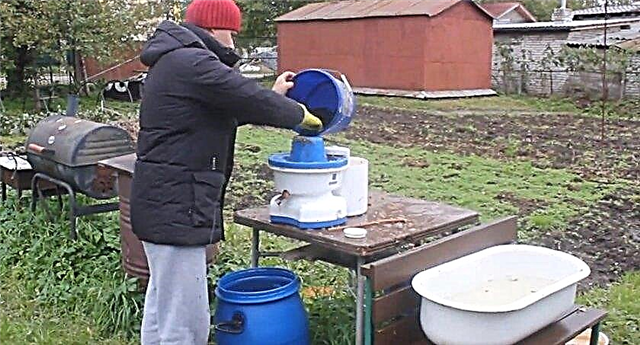 Peel the mountain ash from the stalks, wash thoroughly, squeeze the juice through a juicer. If this ingredient could not be obtained, it can be replaced with dark grapes.
Peel the mountain ash from the stalks, wash thoroughly, squeeze the juice through a juicer. If this ingredient could not be obtained, it can be replaced with dark grapes. Mix both types of juice. Adding chokeberry to apple nectar will ensure the color of the drink is a beautiful pink color, which, in turn, will prevent darkening of the liquid.
Mix both types of juice. Adding chokeberry to apple nectar will ensure the color of the drink is a beautiful pink color, which, in turn, will prevent darkening of the liquid. Filter the resulting liquid. The easiest way to use is a polypropylene bag (sugar is usually sold in such bags). To filter, put the bag in a high saucepan, pour the juice into it, then carefully lift the bag and squeeze out the draining liquid carefully.
Filter the resulting liquid. The easiest way to use is a polypropylene bag (sugar is usually sold in such bags). To filter, put the bag in a high saucepan, pour the juice into it, then carefully lift the bag and squeeze out the draining liquid carefully. Filtration will remove excess flesh, after which less foam will form on the surface of the juice. Pour the finished drink into a high saucepan, put on the stove and, heating to a temperature of + 85ºС, simmer in this state for 15 minutes, not forgetting to constantly remove the collected foam.
Filtration will remove excess flesh, after which less foam will form on the surface of the juice. Pour the finished drink into a high saucepan, put on the stove and, heating to a temperature of + 85ºС, simmer in this state for 15 minutes, not forgetting to constantly remove the collected foam. Dilute the juice with water to balance the taste of the finished drink. The optimal amount of water is 10% of the liquid obtained after pasteurization. Before adding to the juice, boil the water and dissolve the prepared sugar in it.
Dilute the juice with water to balance the taste of the finished drink. The optimal amount of water is 10% of the liquid obtained after pasteurization. Before adding to the juice, boil the water and dissolve the prepared sugar in it. Sterilize jars and lids.
Sterilize jars and lids. Pour the drink into cans, cover, roll up and, making sure that the plug is tight, leave to cool in the upside down state.
Pour the drink into cans, cover, roll up and, making sure that the plug is tight, leave to cool in the upside down state.
Video recipe
Spin, pasteurization, bottling Video recipe: Spin, pasteurization, bottling
Using the press

6-7 L 120 minutes
Nutritional value per 100 g:
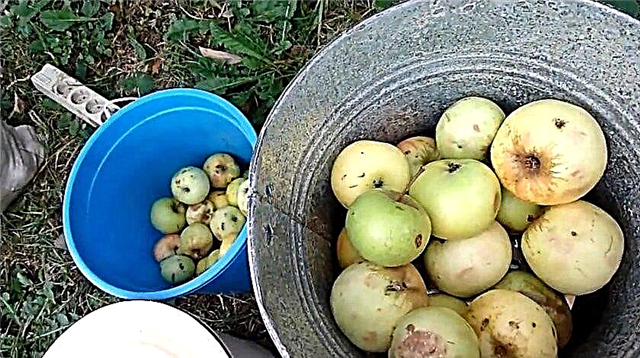 Washed apples to clean from rotten areas, but the core can not be removed.
Washed apples to clean from rotten areas, but the core can not be removed.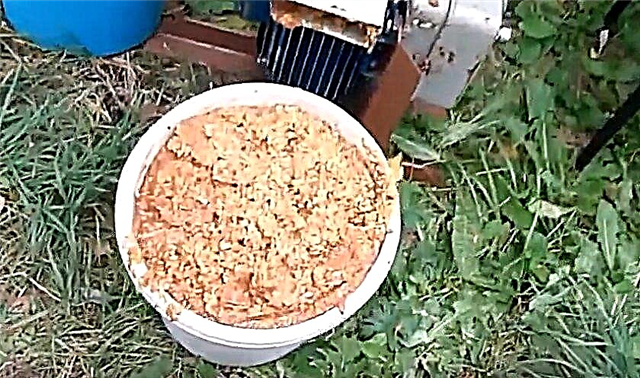 Using a grater, meat grinder, blender or other device, grind the fruits to a state of gruel.
Using a grater, meat grinder, blender or other device, grind the fruits to a state of gruel.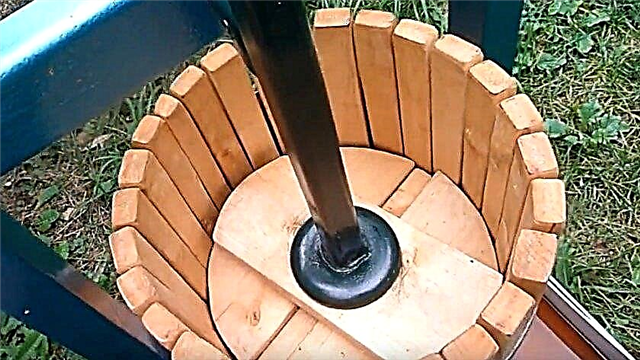 Pour the resulting substance into a special press, squeeze out the liquid.
Pour the resulting substance into a special press, squeeze out the liquid. Warm the drink over low heat to + 95ºС, pour it hot into previously sterilized jars or glass bottles, cover with lids, and seal.
Warm the drink over low heat to + 95ºС, pour it hot into previously sterilized jars or glass bottles, cover with lids, and seal.
Video recipe
Using the press Video recipe: Using the press
Did you know? Experimental studies with laboratory mice, conducted by scientists from the University of Massachusetts, showed the ability of apple juice to block the synthesis of beta-amyloid, which, in turn, provokes the development of Alzheimer's disease and other neurodegenerative pathologies that cause various types of brain dementia.
Apple and carrot juice
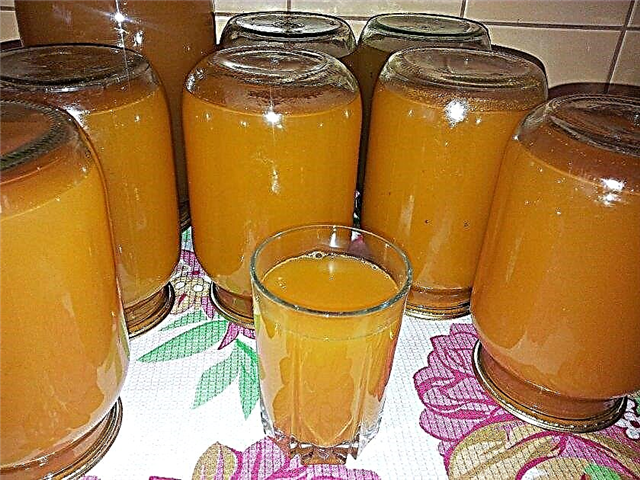
10-12 L 120 minutes
Nutritional value per 100 g:
 Wash apples, cut into quarters, removing the core. Wash carrots, peel each vegetable.
Wash apples, cut into quarters, removing the core. Wash carrots, peel each vegetable.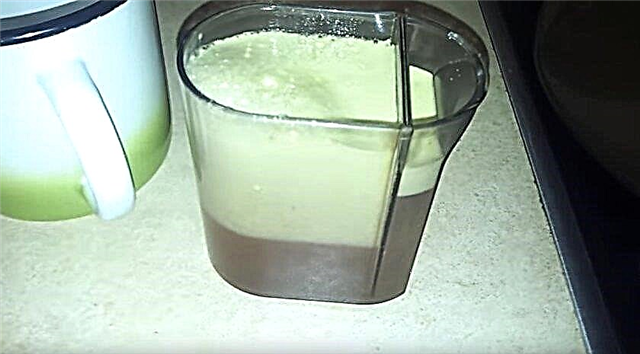 Using a juicer, squeeze the liquid from fruits and root vegetables, mix apple and carrot juice.
Using a juicer, squeeze the liquid from fruits and root vegetables, mix apple and carrot juice.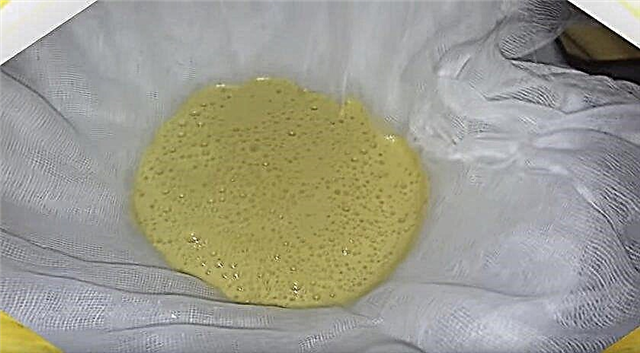 Line the colander with a section of gauze folded in 4 layers, set the colander over the pan and strain the resulting juice through cheesecloth.
Line the colander with a section of gauze folded in 4 layers, set the colander over the pan and strain the resulting juice through cheesecloth.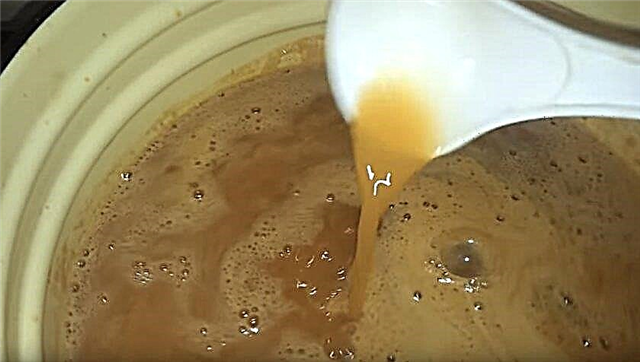 Bring the juice to a boil, boil over low heat for 5 minutes, not forgetting to constantly remove the foam formed on the surface.
Bring the juice to a boil, boil over low heat for 5 minutes, not forgetting to constantly remove the foam formed on the surface. Pour the resulting drink into still warm sterilized glass jars or bottles, cover, roll up, set it upside down until it cools completely.
Pour the resulting drink into still warm sterilized glass jars or bottles, cover, roll up, set it upside down until it cools completely.
Video recipe
Apple and carrot juice Video recipe: Apple and carrot juice
Important! Boiling liquid can only be poured into pre-heated glassware, otherwise it may crack. Therefore, it is better to sterilize the jars immediately before using them for seaming.
Apple and pear juice

13-15 L 180 minutes
Nutritional value per 100 g:
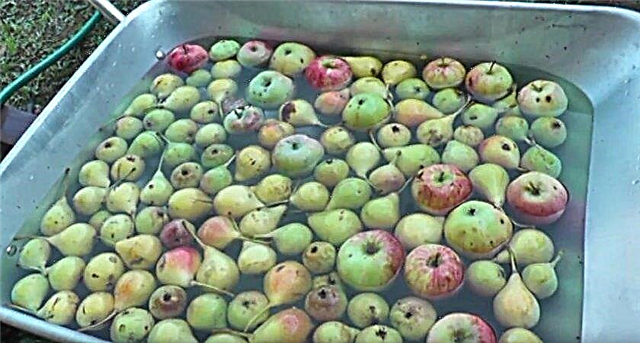 Wash fruits. If the fruits do not have external damage, they can not be cut and seed chambers not removed.
Wash fruits. If the fruits do not have external damage, they can not be cut and seed chambers not removed. Skip the fruit through any chopper (meat grinder, blender, food processor) to make pulp.
Skip the fruit through any chopper (meat grinder, blender, food processor) to make pulp.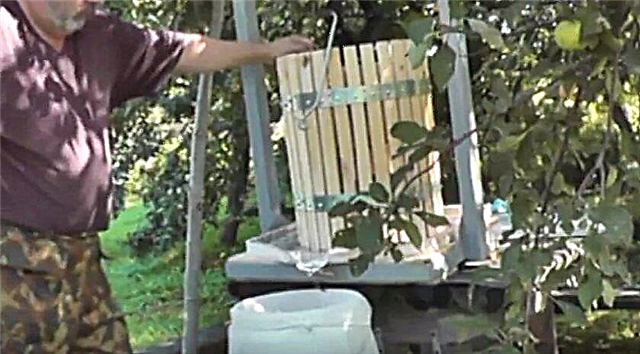 Using a press, squeeze apple-pear nectar. Put the resulting liquid on fire, warm to a temperature of + 90ºС, simmer, without bringing to a boil, 5-7 minutes.
Using a press, squeeze apple-pear nectar. Put the resulting liquid on fire, warm to a temperature of + 90ºС, simmer, without bringing to a boil, 5-7 minutes.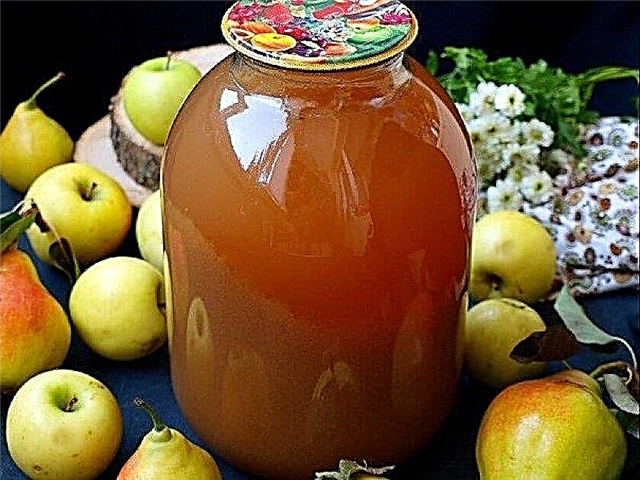 Pour the drink into hot sterilized jars or glass bottles, cover with lids, carefully seal.
Pour the drink into hot sterilized jars or glass bottles, cover with lids, carefully seal.
Video recipe
Apple and Pear Juice Video Recipe: Apple and Pear Juice
Cook in a juicer

90 minutes
Nutritional value per 100 g:
 Cut the apples into quarters, cover with sugar, put in the upper chamber of the juicer with a lattice bottom.
Cut the apples into quarters, cover with sugar, put in the upper chamber of the juicer with a lattice bottom.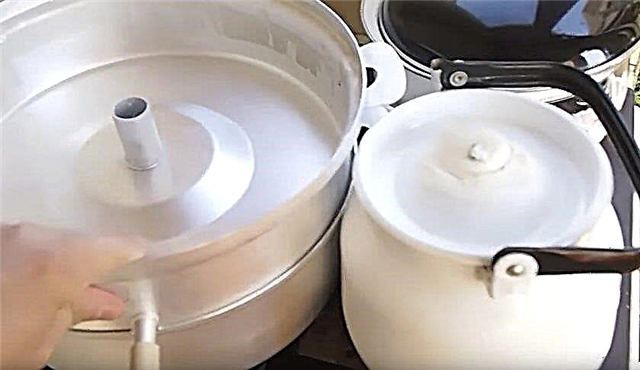 Pour water into the lower section of the gadget, install a middle chamber on top - a juice collector equipped with a special tube, where the juice will accumulate and pasteurize with its subsequent discharge into a storage tank.
Pour water into the lower section of the gadget, install a middle chamber on top - a juice collector equipped with a special tube, where the juice will accumulate and pasteurize with its subsequent discharge into a storage tank. Complete the assembly of the device by installing a camera with the fruits. Cover the cooker with a lid. Put the juice cooker on fire.
Complete the assembly of the device by installing a camera with the fruits. Cover the cooker with a lid. Put the juice cooker on fire.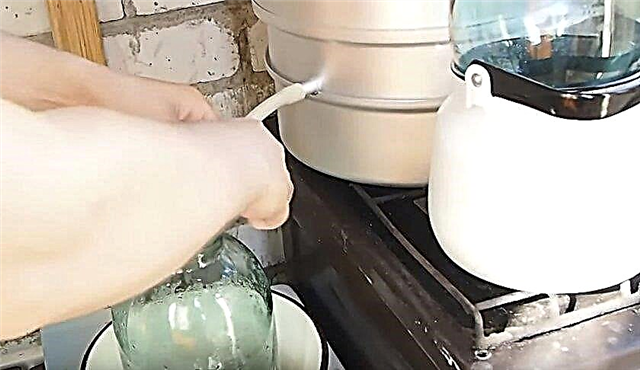 At the level of the “drainage” tube, install a pre-sterilized jar.
At the level of the “drainage” tube, install a pre-sterilized jar. After about 40-60 minutes, remove the clamp from the end of the tube, after which the finished and pasteurized juice will begin to drain from the spout into the jar.
After about 40-60 minutes, remove the clamp from the end of the tube, after which the finished and pasteurized juice will begin to drain from the spout into the jar. When the jar is full, cover it with a lid and roll it up.
When the jar is full, cover it with a lid and roll it up.
Video recipe
Cook in a juice cooker Video recipe: Cook in a juice cooker
Important! The number of apples must be calculated on the basis of the initial size of the juicer so that the available raw materials can fit in the bowl. Basically, for domestic purposes, juice cookers with a volume of 5-8 l are used, and the specified parameter relates to the number of fruits placed in the chamber, and not the finished juice.
Features of storage of blanks
Subject to strict adherence to the technology described in the recipe, pasteurized and hermetically sealed apple juice is stored in the same way as any other homemade spin. A refrigerator or a cellar is not needed for this purpose, it is enough to find a place protected from light, drafts and temperature extremes, for example, a pantry located in the corner of the hallway farthest from the entrance doors.
The optimal shelf life of home preservation is 8-9 months (before the appearance of fresh seasonal fruits), however, after opening the cans, its contents should preferably be consumed within a few days, and such a drink should be stored in the refrigerator.  If during the inspection of stocks it was found that the contents of the can were cloudy, and the lid was not pulled into the tank, but slightly curved outward (swollen), the product is subject to unconditional destruction.
If during the inspection of stocks it was found that the contents of the can were cloudy, and the lid was not pulled into the tank, but slightly curved outward (swollen), the product is subject to unconditional destruction.
You should not try to make “homemade wine” or mash from a fermented drink - wild yeast and bacteria that caused such fermentation processes have nothing to do with that noble microflora that ensures the production of suitable alcohol for consumption.
Did you know? The famous Calvados, whose historical homeland is French Lower Normandy, where this drink has been prepared for more than 500 years, is from a technological point of view a fermented apple (rarely pear) juice, which is subsequently distilled and infused in oak barrels. The trick is that small fruits with the most pronounced aroma are always selected for calvados.
Summing up, we note that, since there is very little natural and healthy in purchased apple juice, it is better to prepare this product at home, on your own, from quality raw materials and in compliance with the technological process. Such a vitamin drink is great for fresh consumption, but after spending a little effort and time, you can make a blank for long-term storage from it.
In addition to the classic recipe for making juice from apples, you can use combinations of this fruit with other vegetables and fruits, add various spices to the drink and thus receive not only new shades of taste, but also additional benefit due to the richer chemical composition of the finished product.

 Squeeze nectar from apples with a juicer.
Squeeze nectar from apples with a juicer. So that the liquid does not darken, squeeze the juice from the lemon and mix with apple juice (instead of lemon, you can use 1 tsp of citric acid).
So that the liquid does not darken, squeeze the juice from the lemon and mix with apple juice (instead of lemon, you can use 1 tsp of citric acid). Pour the resulting liquid into a wide-top container and leave for 15–20 minutes.
Pour the resulting liquid into a wide-top container and leave for 15–20 minutes. After a while, when a dense head of foam forms on the surface, carefully remove it with a slotted spoon. Apple foam can be used to make jams and other dishes, but it is better to brew juice without it.
After a while, when a dense head of foam forms on the surface, carefully remove it with a slotted spoon. Apple foam can be used to make jams and other dishes, but it is better to brew juice without it. Pour the drink into the pan, add sugar. The amount of sugar indicated in the recipe during the canning process can be changed depending on the initial quality (degree of sweetness) of the apples, as well as the taste preferences of the hostess, up to the complete exclusion of this ingredient from the finished product.
Pour the drink into the pan, add sugar. The amount of sugar indicated in the recipe during the canning process can be changed depending on the initial quality (degree of sweetness) of the apples, as well as the taste preferences of the hostess, up to the complete exclusion of this ingredient from the finished product. Put on fire, cover and cook until product temperature rises to + 95ºС. If there is no device for changing the temperature of the liquid in the household, you should focus on the appearance of small bubbles at the bottom of the pan.
Put on fire, cover and cook until product temperature rises to + 95ºС. If there is no device for changing the temperature of the liquid in the household, you should focus on the appearance of small bubbles at the bottom of the pan. To maintain the maximum amount of vitamins, it is very important not to bring the drink to a boil. Sterilize jars and lids. Pour pasteurized liquid into still hot jars, cover with lids and immediately roll up.
To maintain the maximum amount of vitamins, it is very important not to bring the drink to a boil. Sterilize jars and lids. Pour pasteurized liquid into still hot jars, cover with lids and immediately roll up. Turn each jar upside down and carefully inspect the junction of the lid and glass. If there are no signs of leakage, leave the cans upside down to cool completely, and then rearrange them in a place protected from light and drafts for permanent storage.
Turn each jar upside down and carefully inspect the junction of the lid and glass. If there are no signs of leakage, leave the cans upside down to cool completely, and then rearrange them in a place protected from light and drafts for permanent storage. Prepare apples in the manner described above, squeeze the juice out of them using a juicer. If desired, using a press or muscular effort, remove the remaining juice from the cake that remains as a result of using the juice extractor.
Prepare apples in the manner described above, squeeze the juice out of them using a juicer. If desired, using a press or muscular effort, remove the remaining juice from the cake that remains as a result of using the juice extractor. Peel the mountain ash from the stalks, wash thoroughly, squeeze the juice through a juicer. If this ingredient could not be obtained, it can be replaced with dark grapes.
Peel the mountain ash from the stalks, wash thoroughly, squeeze the juice through a juicer. If this ingredient could not be obtained, it can be replaced with dark grapes. Mix both types of juice. Adding chokeberry to apple nectar will ensure the color of the drink is a beautiful pink color, which, in turn, will prevent darkening of the liquid.
Mix both types of juice. Adding chokeberry to apple nectar will ensure the color of the drink is a beautiful pink color, which, in turn, will prevent darkening of the liquid. Filter the resulting liquid. The easiest way to use is a polypropylene bag (sugar is usually sold in such bags). To filter, put the bag in a high saucepan, pour the juice into it, then carefully lift the bag and squeeze out the draining liquid carefully.
Filter the resulting liquid. The easiest way to use is a polypropylene bag (sugar is usually sold in such bags). To filter, put the bag in a high saucepan, pour the juice into it, then carefully lift the bag and squeeze out the draining liquid carefully. Filtration will remove excess flesh, after which less foam will form on the surface of the juice. Pour the finished drink into a high saucepan, put on the stove and, heating to a temperature of + 85ºС, simmer in this state for 15 minutes, not forgetting to constantly remove the collected foam.
Filtration will remove excess flesh, after which less foam will form on the surface of the juice. Pour the finished drink into a high saucepan, put on the stove and, heating to a temperature of + 85ºС, simmer in this state for 15 minutes, not forgetting to constantly remove the collected foam. Dilute the juice with water to balance the taste of the finished drink. The optimal amount of water is 10% of the liquid obtained after pasteurization. Before adding to the juice, boil the water and dissolve the prepared sugar in it.
Dilute the juice with water to balance the taste of the finished drink. The optimal amount of water is 10% of the liquid obtained after pasteurization. Before adding to the juice, boil the water and dissolve the prepared sugar in it. Sterilize jars and lids.
Sterilize jars and lids. Pour the drink into cans, cover, roll up and, making sure that the plug is tight, leave to cool in the upside down state.
Pour the drink into cans, cover, roll up and, making sure that the plug is tight, leave to cool in the upside down state. Washed apples to clean from rotten areas, but the core can not be removed.
Washed apples to clean from rotten areas, but the core can not be removed. Using a grater, meat grinder, blender or other device, grind the fruits to a state of gruel.
Using a grater, meat grinder, blender or other device, grind the fruits to a state of gruel. Pour the resulting substance into a special press, squeeze out the liquid.
Pour the resulting substance into a special press, squeeze out the liquid. Warm the drink over low heat to + 95ºС, pour it hot into previously sterilized jars or glass bottles, cover with lids, and seal.
Warm the drink over low heat to + 95ºС, pour it hot into previously sterilized jars or glass bottles, cover with lids, and seal. Wash apples, cut into quarters, removing the core. Wash carrots, peel each vegetable.
Wash apples, cut into quarters, removing the core. Wash carrots, peel each vegetable. Using a juicer, squeeze the liquid from fruits and root vegetables, mix apple and carrot juice.
Using a juicer, squeeze the liquid from fruits and root vegetables, mix apple and carrot juice. Line the colander with a section of gauze folded in 4 layers, set the colander over the pan and strain the resulting juice through cheesecloth.
Line the colander with a section of gauze folded in 4 layers, set the colander over the pan and strain the resulting juice through cheesecloth. Bring the juice to a boil, boil over low heat for 5 minutes, not forgetting to constantly remove the foam formed on the surface.
Bring the juice to a boil, boil over low heat for 5 minutes, not forgetting to constantly remove the foam formed on the surface. Pour the resulting drink into still warm sterilized glass jars or bottles, cover, roll up, set it upside down until it cools completely.
Pour the resulting drink into still warm sterilized glass jars or bottles, cover, roll up, set it upside down until it cools completely. Wash fruits. If the fruits do not have external damage, they can not be cut and seed chambers not removed.
Wash fruits. If the fruits do not have external damage, they can not be cut and seed chambers not removed. Skip the fruit through any chopper (meat grinder, blender, food processor) to make pulp.
Skip the fruit through any chopper (meat grinder, blender, food processor) to make pulp. Using a press, squeeze apple-pear nectar. Put the resulting liquid on fire, warm to a temperature of + 90ºС, simmer, without bringing to a boil, 5-7 minutes.
Using a press, squeeze apple-pear nectar. Put the resulting liquid on fire, warm to a temperature of + 90ºС, simmer, without bringing to a boil, 5-7 minutes. Pour the drink into hot sterilized jars or glass bottles, cover with lids, carefully seal.
Pour the drink into hot sterilized jars or glass bottles, cover with lids, carefully seal. Cut the apples into quarters, cover with sugar, put in the upper chamber of the juicer with a lattice bottom.
Cut the apples into quarters, cover with sugar, put in the upper chamber of the juicer with a lattice bottom. Pour water into the lower section of the gadget, install a middle chamber on top - a juice collector equipped with a special tube, where the juice will accumulate and pasteurize with its subsequent discharge into a storage tank.
Pour water into the lower section of the gadget, install a middle chamber on top - a juice collector equipped with a special tube, where the juice will accumulate and pasteurize with its subsequent discharge into a storage tank. Complete the assembly of the device by installing a camera with the fruits. Cover the cooker with a lid. Put the juice cooker on fire.
Complete the assembly of the device by installing a camera with the fruits. Cover the cooker with a lid. Put the juice cooker on fire. At the level of the “drainage” tube, install a pre-sterilized jar.
At the level of the “drainage” tube, install a pre-sterilized jar. After about 40-60 minutes, remove the clamp from the end of the tube, after which the finished and pasteurized juice will begin to drain from the spout into the jar.
After about 40-60 minutes, remove the clamp from the end of the tube, after which the finished and pasteurized juice will begin to drain from the spout into the jar. When the jar is full, cover it with a lid and roll it up.
When the jar is full, cover it with a lid and roll it up.

